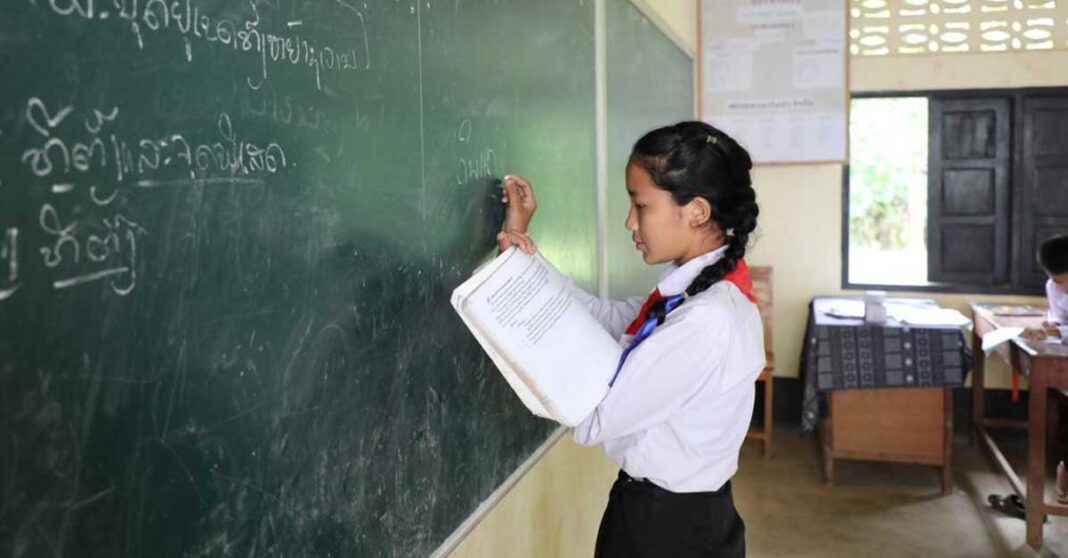Investing in people means prioritizing education as the world marks the fifth International Day of Education.
This year’s theme – “to invest in people, prioritize education” – highlights the urgent need to focus on education as a way to accelerate progress towards the completion of the Sustainable Development Goals.
The education system has recorded significant progress in the past decades in Laos, reaching 98.7% of net enrollment in primary schools (2017), some concerning gaps still need to be filled to ensure the quality of education needed by children to reach their full potential.
Recent assessments from the Lao Ministry of Education and Sports show that only 1 in 3 children meet literacy standards after Grade 3 and that more than 30% of children don’t transition to lower-secondary school.
These national numbers hide important disparities between urban and rural areas, with children from rural communities more affected.
With increasing economic struggles facing the Lao people, lack of infrastructure, and proper transportation to reach secondary schools in remote areas, the deprivation of education has direct consequences for children, especially for girls who face higher risks of early child marriage and pregnancy.
Conditional Education Assistance (CEA) has proven to have a positive impact on children from remote areas to transition from primary to lower-secondary school and complete the compulsory eight years of education (from age 6 to 15) promoted in Laos.
Over the past three academic years (2019-2021) and in partnership with the Ministry of Education and Sports, the British Embassy, and private funds from Taiwan, World Vision piloted a targeted intervention to improve educational outcomes by providing cash assistance to 220 vulnerable children to start their first year of lower secondary school.
The pilot was implemented in Pak Ou district, Luang Prabang province, where the secondary-school enrollment rate is one of the lowest in the country.
Research from CEA reveals that among 254 participants, including children benefitting from the CEA, parents, teachers, and local authorities.
The number of disadvantaged children transitioning to lower secondary school increased, with an enrollment rate of 92.7% children in the target villages against 68% for the whole district (the academic year 2020-21).
CEA brings changes to children’s education, with 98% of the recipients more motivated to study than before and 95% of parents willing to support their children the following years even without conditional assistance.
It also reduces the likelihood of early marriage, with 94% of caregivers of children who received support now considering that secondary education is more important than getting married.
Gender inequalities still challenge girls to study at home, with 72% of girls surveyed spending more than 1 hour with house chores, compared to 34% of boys.
The encouraging data highlights the need for joint efforts to address educational gaps, to increase the use of holistic approaches inclusive of all the education stakeholders and, to develop a shared vision that education is a continuing process that is not only confined to the classroom.
The CEA intervention conducted by World Vision complemented continuing education programming that engages the participation of parents and caregivers, enhances the teachers’ and relevant district authorities’ capacities, trains village education volunteers to support students after class, and focuses on a child-centered teaching approach in the class.
“The results of the research show that awarding CEA helped the students to have confidence in continuing to high school until graduation,” said Savivanh Vongxaiya, Education and Early Child Development Coordinator for World Vision International
“With the combination of this intervention to our education programming, we are very proud to see the change in the attitude towards longer education and reducing early child marriage,” Savivanh noted.



